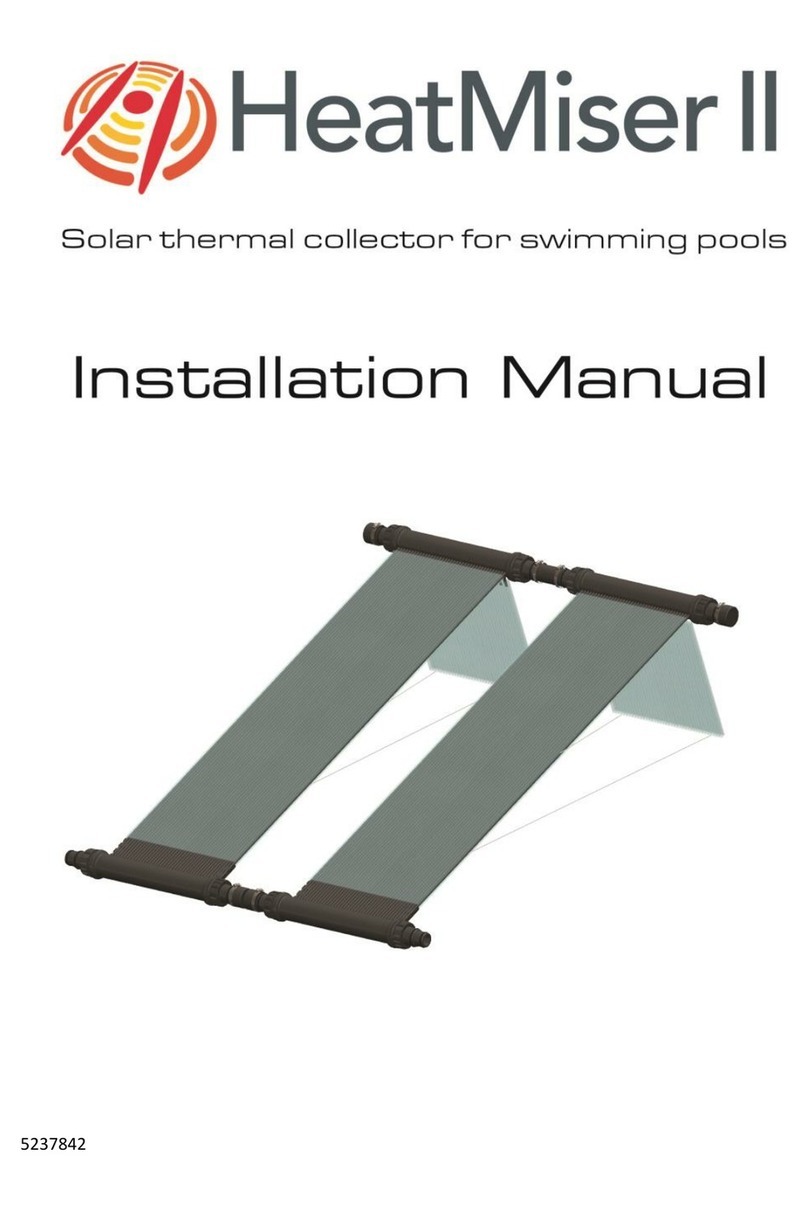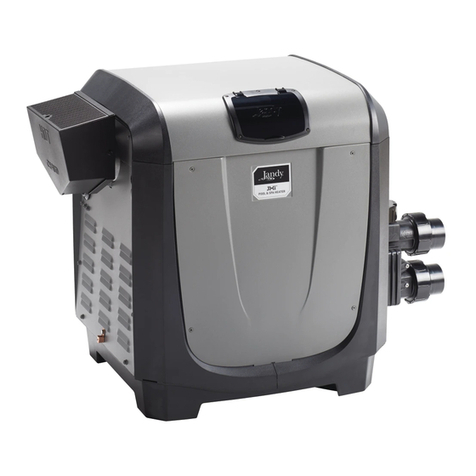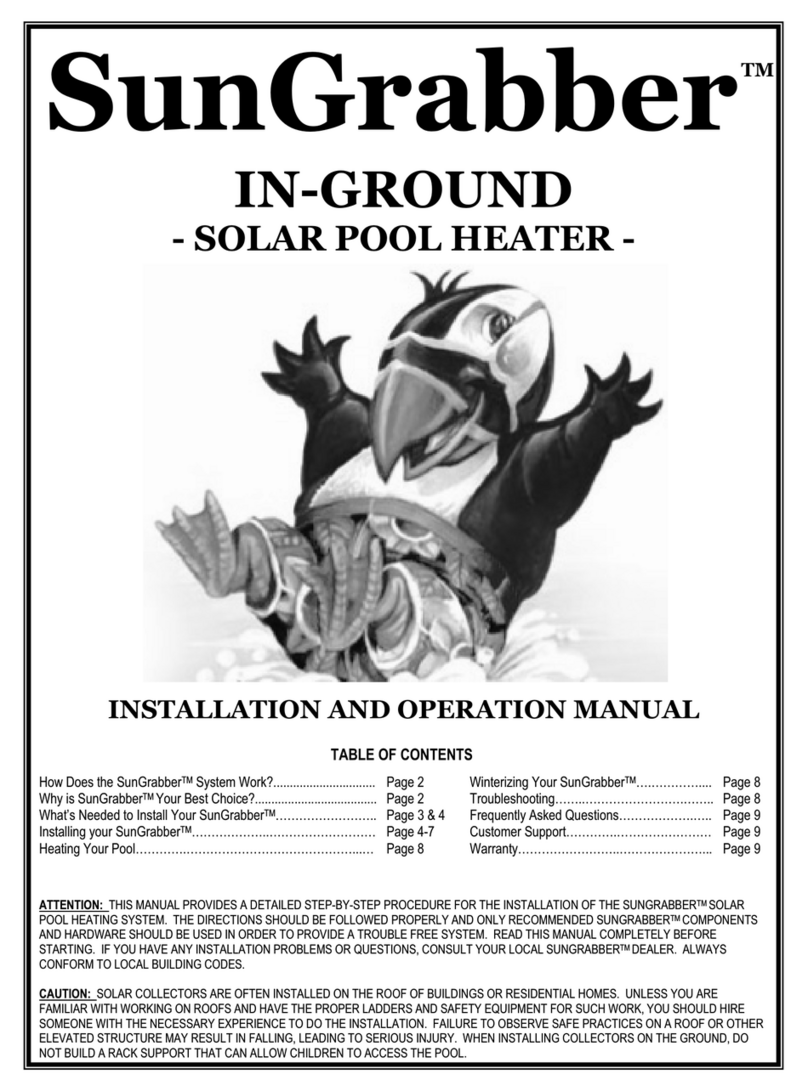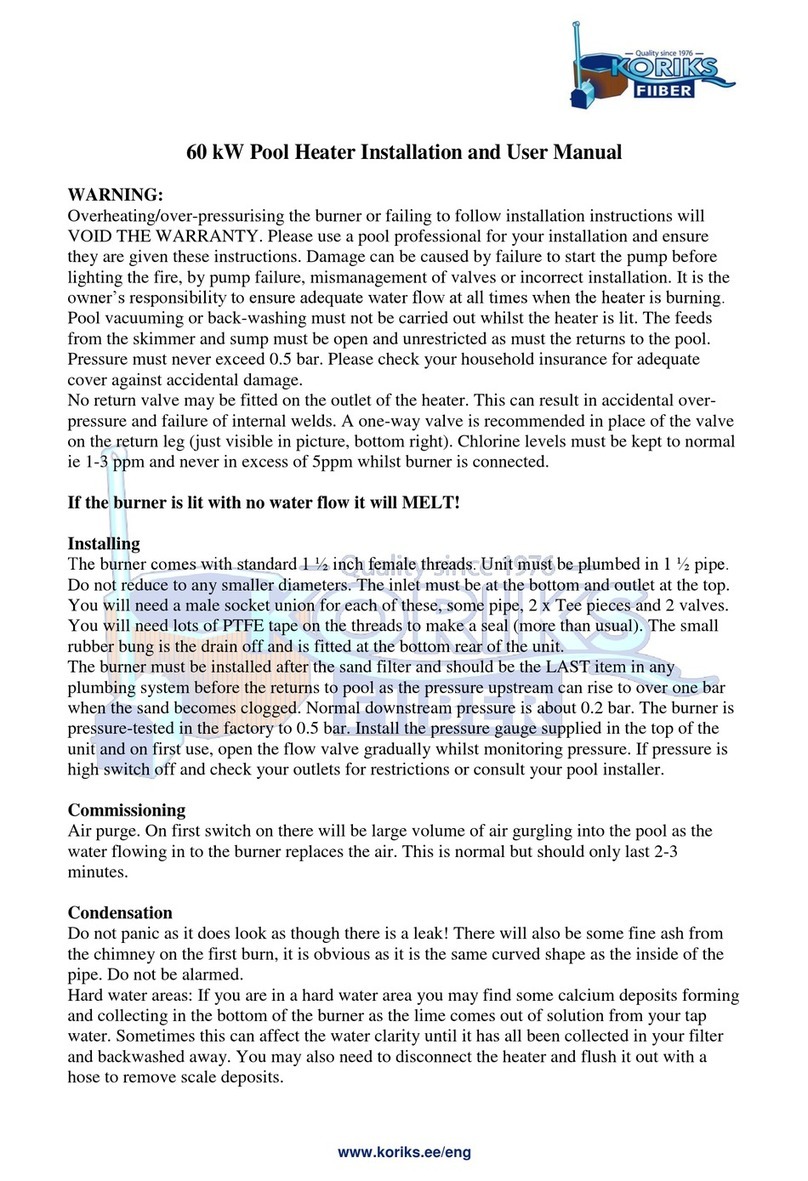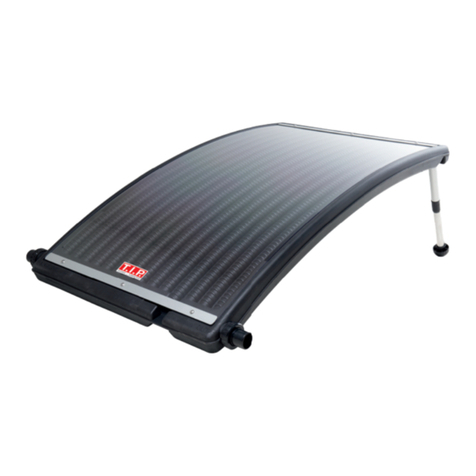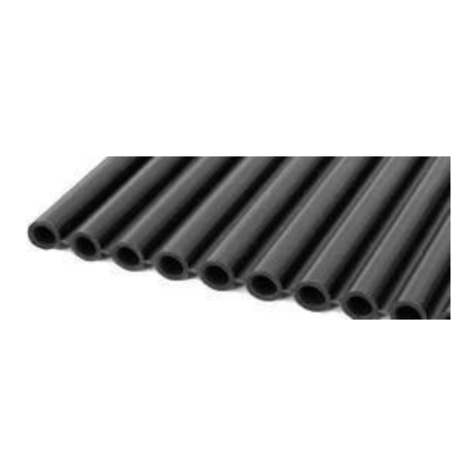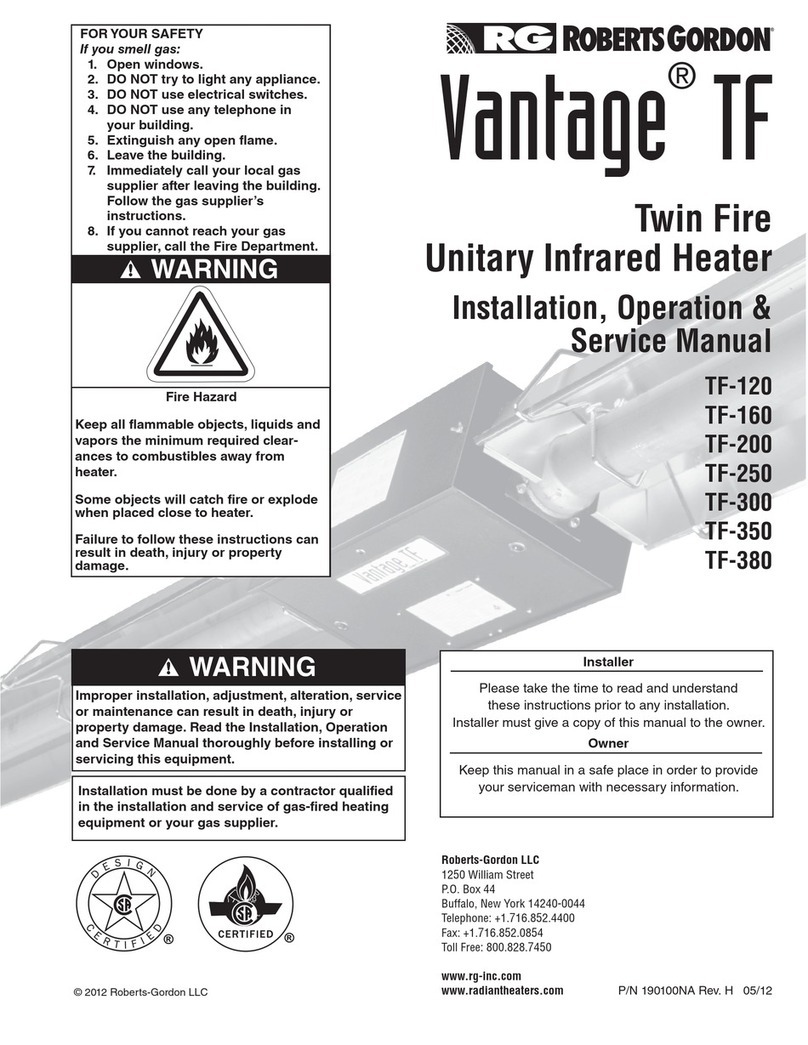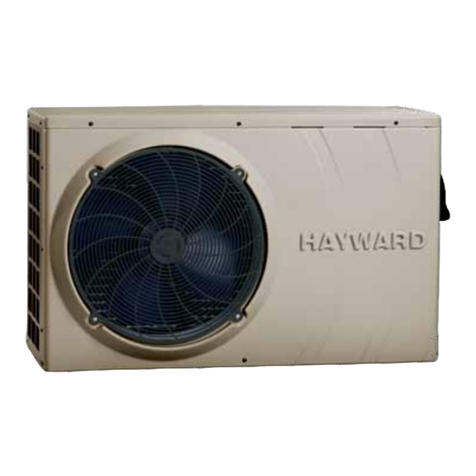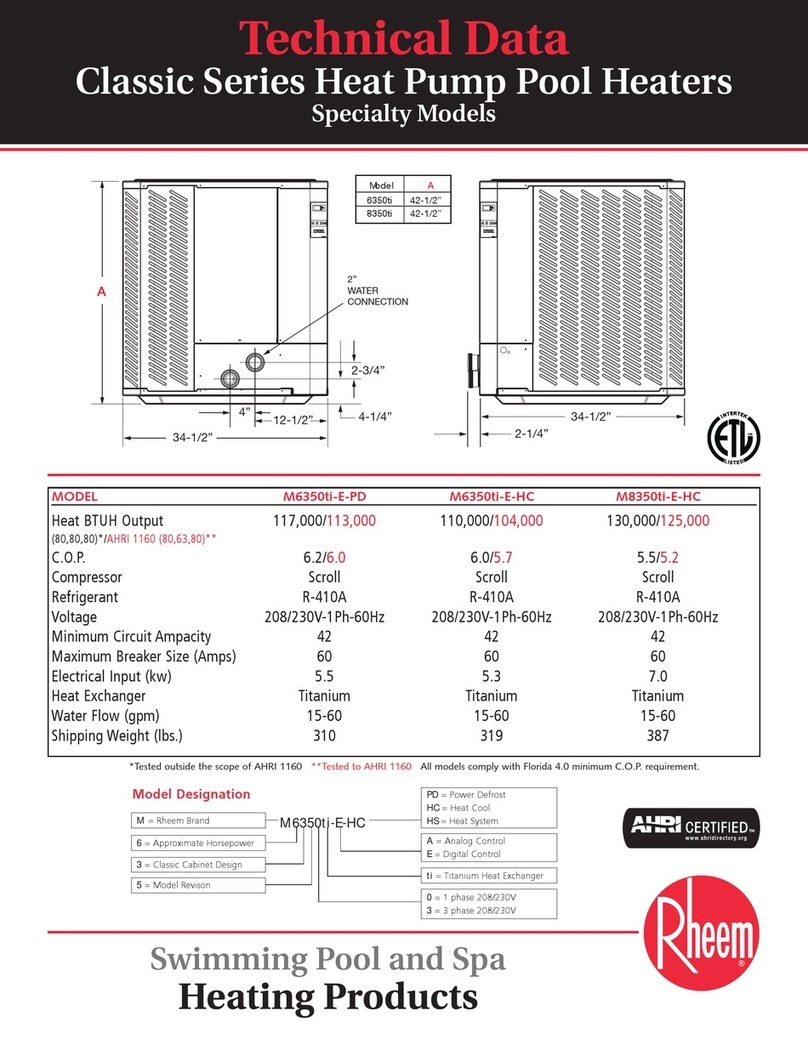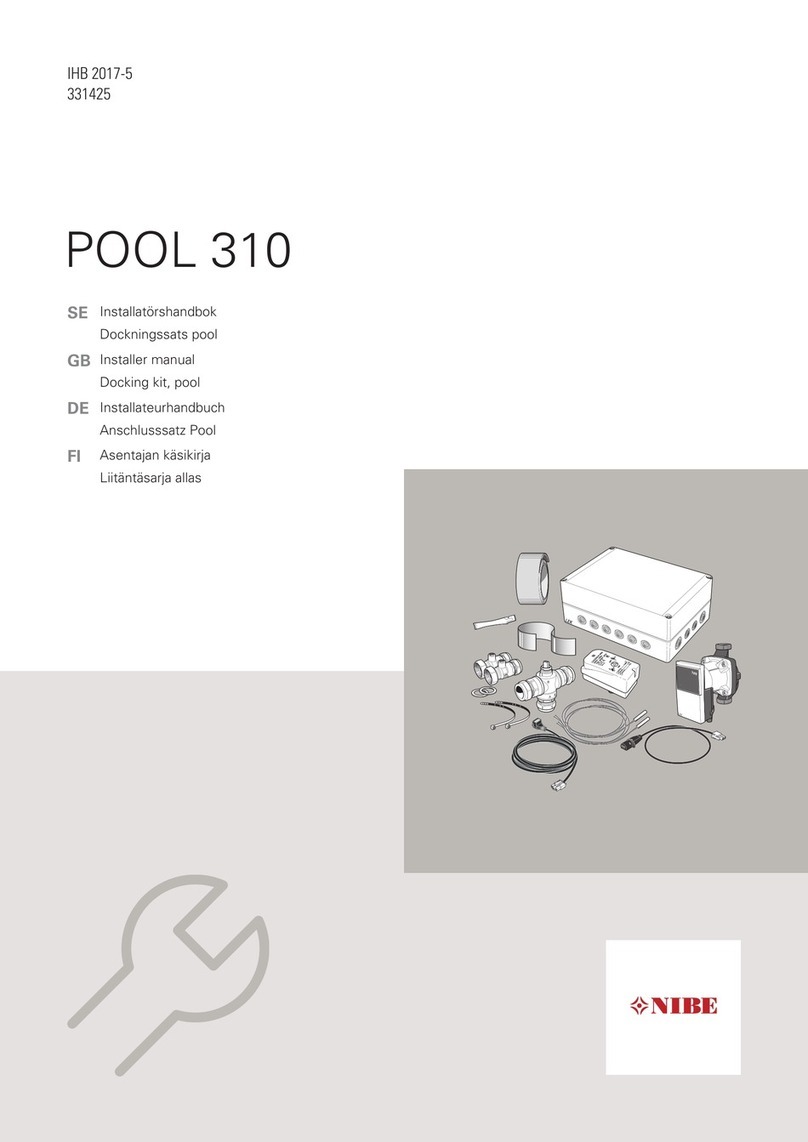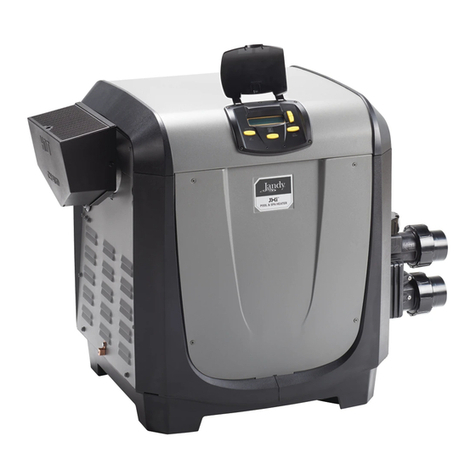
6
SECTION 2
OPÉRATION ET ENTRETIEN
Nous recommandons qu'un technicien qualifié
et responsable démarre et entretienne votre
unité. Assurez-vous que le chauffe-piscine et la
tuyauterie sont remplis d'eau avant de
démarrer l'unité.
2.1) COMBUSTIBLE
Utilisez uniquement du mazout #2. Ne jamais utiliser de mazout plus
lourd, de gazoline, d'huile à moteur ou tout autre type de combustible
dans le chauffe-piscine.
2.2) DÉMARRAGE
Le brûleur à mazout de l'unité HMP-03 est assemblé, monté et broché
en usine (gicleur compris). La pression de la pompe est aussi ajustée
en usine à 140 PSI. Les ajustements d'air faits en usine sont les
suivants : 2 pour la bande d'air principale (grosse) et 8 pour la bande
d'air fine (petite). L'assemblage de gicleur est barré de façon
permanente à 0. Le démarrage doit se faire comme suit (Référer à la
figure 1):
1. Assurez-vous que le réservoir à mazout est plein et que sa vanne
de fermeture est ouverte;
2. Démarrer la pompe circulatrice de votre système de
filtration de piscine et assurez-vous que l’eau de la piscine
circule dans votre chauffe-piscine. Sélectionner la position ‘’
ON ‘’ de l’interrupteur électrique alimentant votre chauffe-
piscine;
3. Retirer la porte d’accès situé en façade du chauffe-piscine et
ajuster le thermostat de la piscine (C) à son minimum.
Sélectionner la position ‘’ON’’ de l’interrupteur (D) situé au bas du
thermostat du chauffe-piscine (C). Si votre chauffe-piscine est
bien rempli d’eau, la lumière VERTE (E) du détecteur de bas
niveau d’eau (G) s’allumera. Si la lumière rouge (F) du contrôle de
bas niveau d’eau (F) est allumé, l’air contenue dans votre chauffe-
piscine n’a pas été éliminé entièrement. Au démarrage initial vous
devez allouer de 15 à 20 minutes pour l’élimination complète de
l’air dans le chauffe-piscine. Afin d’accélérer le processus nous
vous recommandons d’ouvrir d’un tour la soupape de l’évent (A)
du chauffe-piscine (Poignée blanche de l’évent un tour anti-
horaire) jusqu’à ce que de l’eau soit évacuée par l’évent. Ensuite
refermer la soupape de l’évent dans le sens horaire jusqu’à ce
l’eau cesse de couler. NE PAS SERRER TROP FERMEMENT
LA SOUPAPE DE L’ÉVENT;
4. Démarrez le brûleur en ajustant le thermostat de la piscine (C) à
une température supérieure à l’eau de la piscine. Assurez-vous
de purger l’air complètement des conduites de mazout. S’il n’y a
pas d’allumage et que le bouton rouge du relais de combustion
(L) est en position de sécurité, consultez la section 2.3 de ce
manuel;
5. (INSTALLATION INTÉRIEURE SEULEMENT). Ajustez le tirage
de cheminée à la valeur spécifiée à la section 1.7. Prenez cette
mesure à un point milieu entre la sortie du chauffe-piscine et
l'entrée de la cheminée;
6. Prenez un test de fumée et une lecture de CO2après un minimum
de 5 minutes d'opération. La lecture du test de fumée doit être de
0 et le CO2entre un minimum de 10% et un maximum de 12.5%.
Si ce n'est pas le cas, utilisez la bande d'air fine pour atteindre ces
résultats. NE PAS OPÉRER LE CHAUFFE-PISCINE AVEC UNE
LECTURE DE FUMÉE SUPÉRIEURE A 0.
2.3) DÉMARRAGE APRÈS UNE PANNE
D'ALLUMAGE
1. Vérifiez le niveau de mazout dans le réservoir;
2. Assurez-vous que la vanne de fermeture de mazout est ouverte;
3. Assurez-vous que le filtre à mazout n'est pas bouché (vérifiez la
lecture de vide (vacuum) qui doit être de 6 po. hg pour un
système à un tube et de 12 po. hg pour un système à 2 tubes);
4. Vérifiez les disjoncteurs électriques (fusibles);
5. Vérifiez l'ajustement des électrodes du brûleur (consultez le
manuel d'instruction du brûleur);
6. Vérifiez s'il y a une demande au niveau du thermostat de la
piscine;
7. Vérifiez si les conduites de mazout sont complètement purgées
d'air.
Si après avoir suivi cette procédure et avoir pressé le bouton rouge du
contrôle de combustion (L), le brûleur (N) ne redémarre toujours pas,
appelez un technicien qualifié. N'essayez jamais de redémarrer le
brûleur s'il y a une accumulation de mazout ou de vapeur de mazout
dans la chambre à combustion.
2.4) OPÉRATION
Le chauffe-piscine HMP-03 est muni d’un échangeur indirect. Un circuit
d’eau primaire en contact avec la flamme est un circuit fermé et
pressurisé similaire à une chaudière résidentielle équipée d’un
régulateur de pression et soupape anti-retour (J), d’un réservoir
d’expansion (V), d’un contrôle de température opérationnel et haute
température (S), soupape de sûreté (U), d’un détecteur de bas niveau
d’eau (G), d’un purgeur d’air (A), d’une soupape de drainage (O) et
d’un indicateur de température et pression (thermomanomètre W).
L’alimentation en eau est assurée par la pression de la pompe
circulatrice d’eau de la piscine et limité à 15 Psi par le régulateur de
pression.
Le circuit d’eau secondaire est composé d’un serpentin à tube en
cuivre à ailettes dans lequel l’eau de la piscine est chauffée par l’eau
du circuit primaire. Le serpentin est équipé d’un thermostat ajustable
(C) afin de contrôler la température d’eau de la piscine (Localisé à
l’intérieur du compartiment avant du chauffe-piscine). L’ajustement
maximum de température est de 105°F (40°C) et le différentiel est fixé
à 3°F (-16°C). La sonde de température (H) est localisée à l’entrée
d’eau du chauffe-piscine. De plus, un limiteur de température (B)
intégré au HMP-03 agit comme sécurité et empêche la température de
l'eau à la sortie du chauffe-piscine de dépasser 140°F (60°C). Il est
possible qu'il y ait une différence entre la température d'ajustement du
thermostat du chauffe-piscine (C) et une lecture de thermomètre
submergé dans la piscine. Les raisons suivantes peuvent expliquer
cette différence :
a. Si l’unité n'est pas opérée continuellement, un temps de
stabilisation est requis pour atteindre la température désirée;
b. L'emplacement du thermomètre submergé n'est pas représentatif
de la température à l'entrée de la pompe de circulation de la
piscine;
c. Le thermomètre submergé est défectueux ou hors de calibration;
d. Le thermomètre submergé est trop près de l'arrivée d'eau chaude
dans la piscine.
Le chauffe piscine HMP-03 peut être contrôlé par l'interrupteur (D)
localisé à l’intérieur du compartiment avant. L’unité est munie d'un
contrôle de bas niveau d’eau (G) qui empêche l’opération si le chauffe-
piscine n’est pas complètement purgé d’air. Si vous devez drainer,
nettoyer le filtre à piscine (Back wash) ou arrêter la pompe circulatrice
de votre piscine arrêter votre chauffe piscine au moins 5 minutes avant
l’opération.

